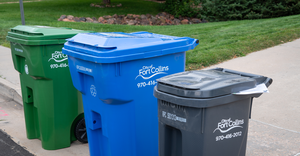TECHNOLOGY: New Reciprocating Engine Energizes LFG Production
May 1, 1996
Lynn Morgan
New landfill gas-to-energy projects face declining wholesale energy prices and tough air emission regulations.
A unique pilot project in Wisconsin, however, may help overcome these obstacles by providing more efficient energy production with minimal emissions, according to the developers.
In a joint research effort, Waste Management Inc., Oak Brook, Ill.; Rust Engineering, Birmingham, Ala. and Caterpillar Inc., Peoria, Ill., set out to adapt a Caterpillar reciprocating engine to run on methane gas.
Conducted at an existing gas-to-energy facility in Germantown, a Milwaukee suburb, the project became Wisconsin's first landfill gas (LFG) powered electrical generation site in 1985. Two Caterpillar solar turbines were installed at the site to combust gas produced by Waste Management's closed Omega Hills Landfill. The 4,500-horsepower turbines are each capable of generating 3.3 megawatts of electricity for sale to the local utility.
A prototype Caterpillar 3600 series engine installed at the Germantown facility in July 1992 began producing power the following October. Originally designed to use diesel or natural gas as a fuel, the sixcylinder, 1,552-horsepower turbocharged prototype engine is capable of generating 1.135 megawatts of electricity.
Adapting the engine to run on LFG required numerous modifications, according to Paul Orvis, the facility's plant operator. "The principles are the same, but landfill gas is far more corrosive and has a much lower heat value than diesel or natural gas," he continued. LFG typically contains 50 to 60 percent methane gas, which can be used as fuel.
To accommodate LFG's low heating value and corrosive composition, Caterpillar modified the sizing and materials used in the engine's fuel system and created new computer protocols for fuel efficiency and air emissions performance.
Because it uses computer controls to continuously adjust the mix of LFG and air, the new engine reportedly wrings far more energy from landfill gas than previous generations of gastoenergy technology.
Turbines at the Germantown plant, for example, typically lost up to one-third of their power production as the turbines struggled to compensate for increased condensation in the summer months.
The reciprocating engine, in contrast, produces power at its rated capacity year-round; computerized controls reportedly are able to accommodate weather changes and maintain power production.
The increased revenue from the sale of power produced by this fuel efficiency increase may allow landfill gas-to-energy facilities to be installed at sites that generate lower LFG volumes. "This will put some marginal sites back in the game," Orvis said.
Approximately $1.5 million was invested in developing the prototype, including some $500,000 for the engine itself. Other costs included the building, compressor, switch gear and wiring. The engine's operating costs are an estimated $0.008 per kilowatt hour; the turbine's operating costs, in comparison, are roughly $0.009 per kilowatt hour.
The engine's computer technology, coupled with its lean-burn de-sign, also delivers reduced air emissions. Emissions of pollutants such as nitrous oxide, carbon monoxide and sulfur dioxide, for instance, are nearly one-third less than emissions from earlier generation turbines - and far lower than flaring without energy recovery.
The engine's simple mechanical design also provides benefits. "Our maintenance costs are higher, but parts costs are lower and I expect a longer life than a turbine [would pro-vide]," Orvis said. The engine's performance has exceeded the pilot project's goal of 92 percent of the available hours, Orvis notes. During 1994, the engine achieved a 95 percent performance rate.
To date, the engine has produced more than 20 million kilowatt hours of electricity, the equivalent of 48,000 fossil fuel barrels, by combusting some 504 million cubic feet of LFG - an average of 4 million cubic feet of gas per day.
With the pilot successfully completed, Waste Management is planning to install several reciprocating engines at sites around the country.
The company's Lakeview Re-cycling and Disposal Facility, Erie, Pa., recently received two 16-cylinder, 4,376-horsepower Caterpillar 3616 engines developed as a result of the Wisconsin research effort. Groundbreaking for the Erie instal-lation is expected this spring, and the engines will be brought on-line in early 1997.
Other new engine installations are under consideration for sites in York, Pa., Rochester, N.H., and Humbolt, Texas.
You May Also Like


